Abstract
The relative carbon isotope content (δ13C value) in each position of glucose from a C4 plant (maize starch) and a C3 plant (sugar beet sucrose) has been determined by stepwise chemical and biochemical degradation of the molecule and stable isotope ratio measurement of the fragments. The suitability of the degradation methods has been tested through their chemical yield and isotope balance. The results from both methods agreed perfectly, revealing a defined and reproducible 13C distribution in glucose from both origins. Most prominent was a relative 13C enrichment by 5 to 6 δ-units in position 4 and a depletion by about 5 δ-units in carbon 6. As possible reasons for these nonstatistical isotope distributions, isotope effects of the aldolase, the triose phosphate isomerase, and the transketolase reactions during carbohydrate biosynthesis are discussed. The practical importance of the results in regard to isotope distributions in secondary plant products as a means for food authenticity control is outlined.
Full text
PDF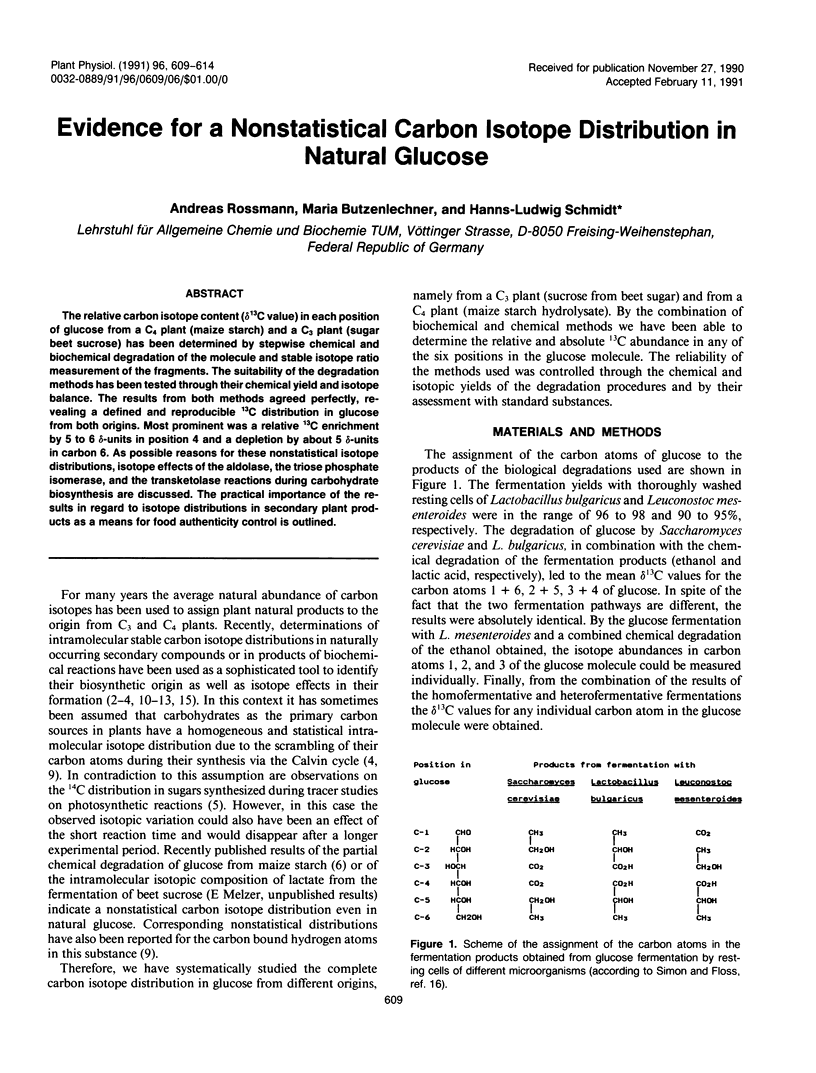
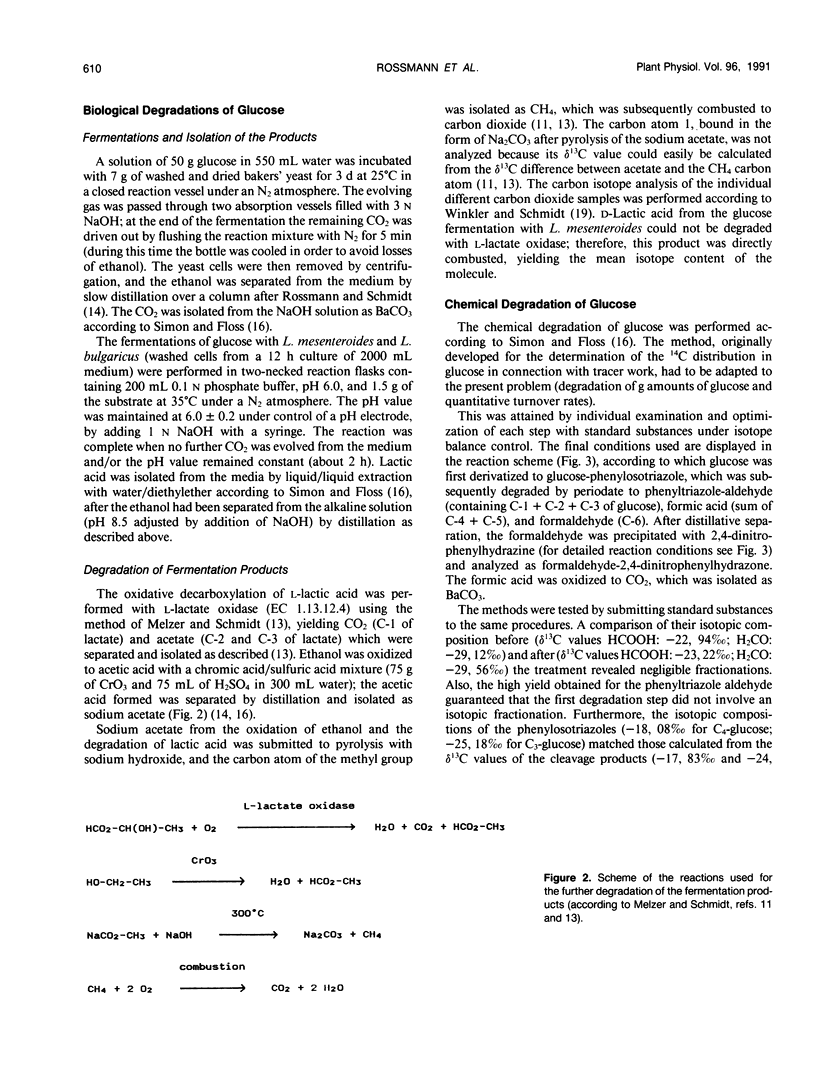
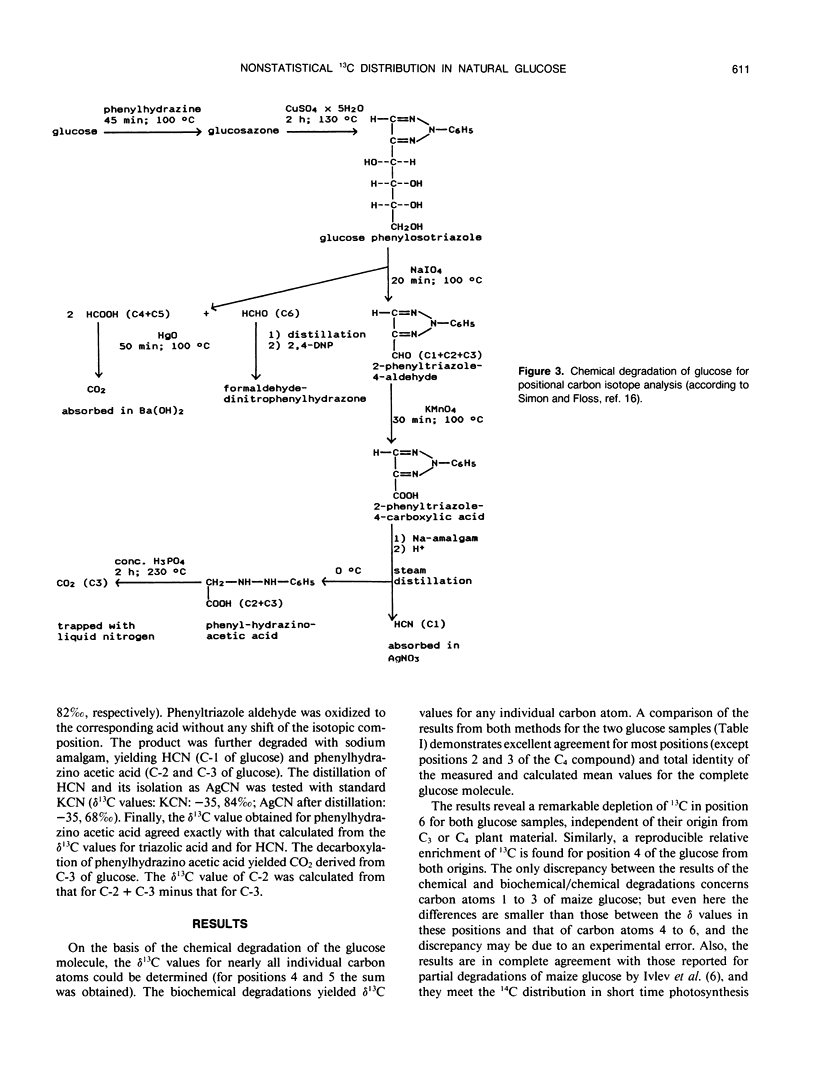
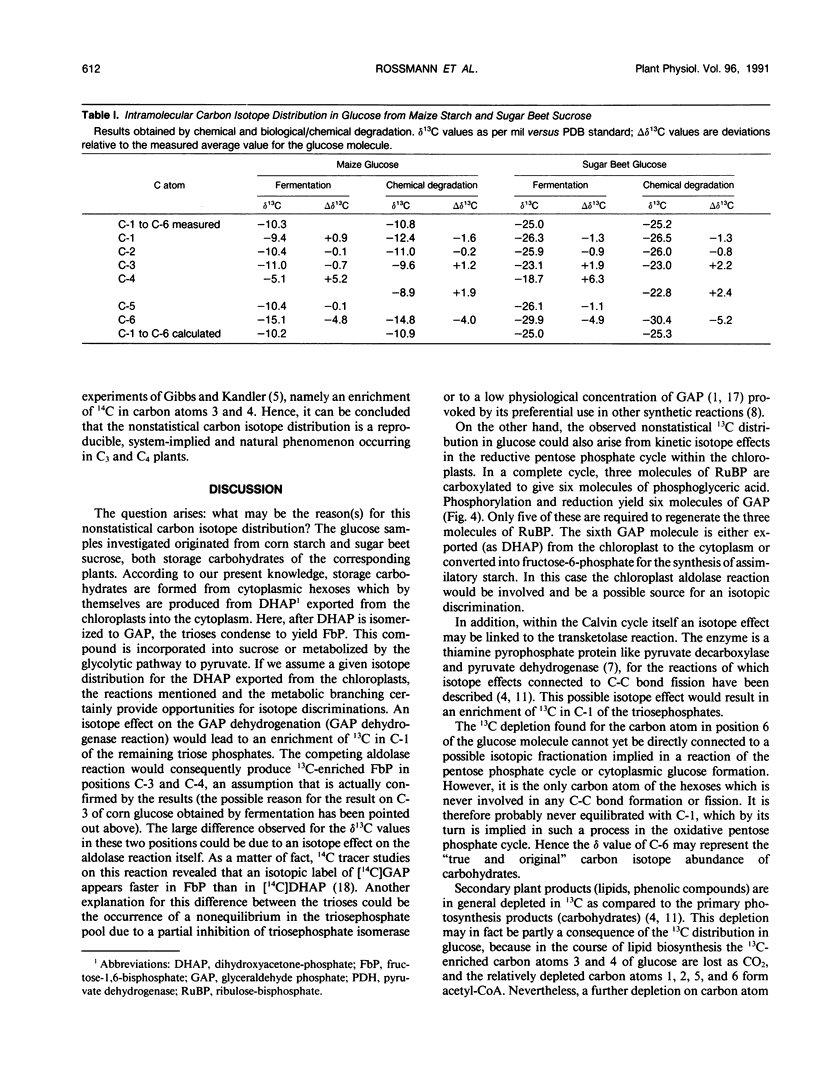
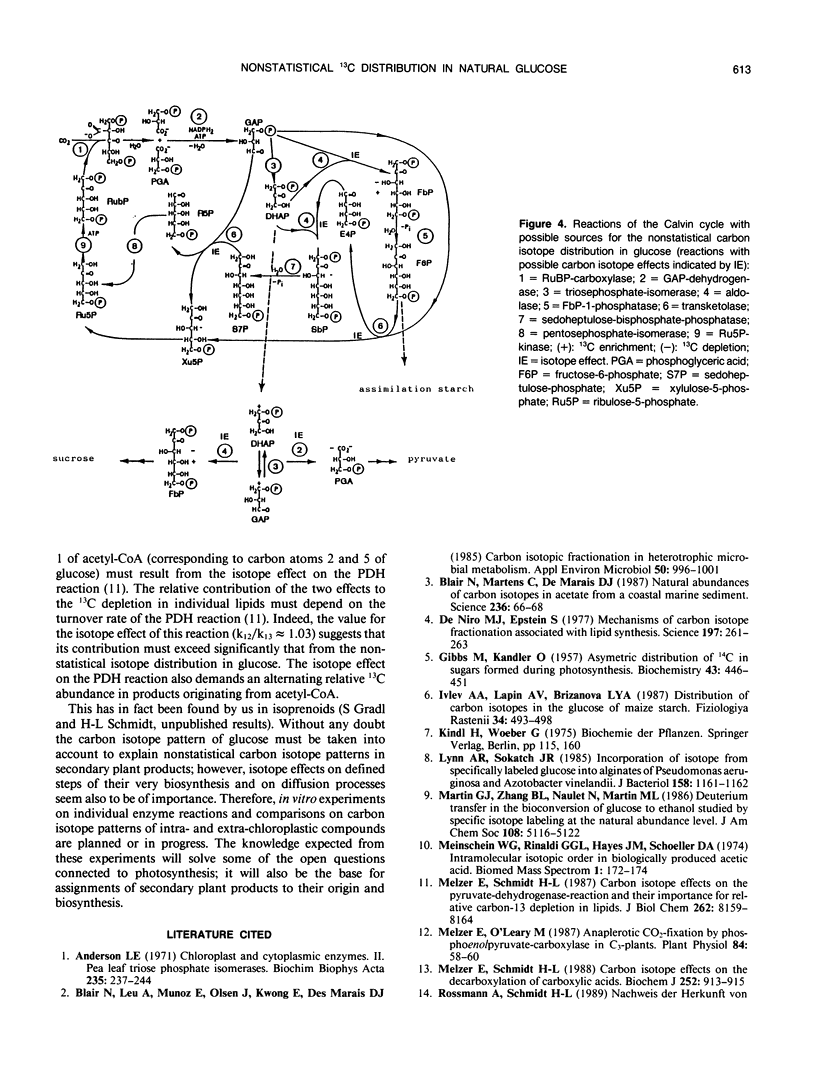
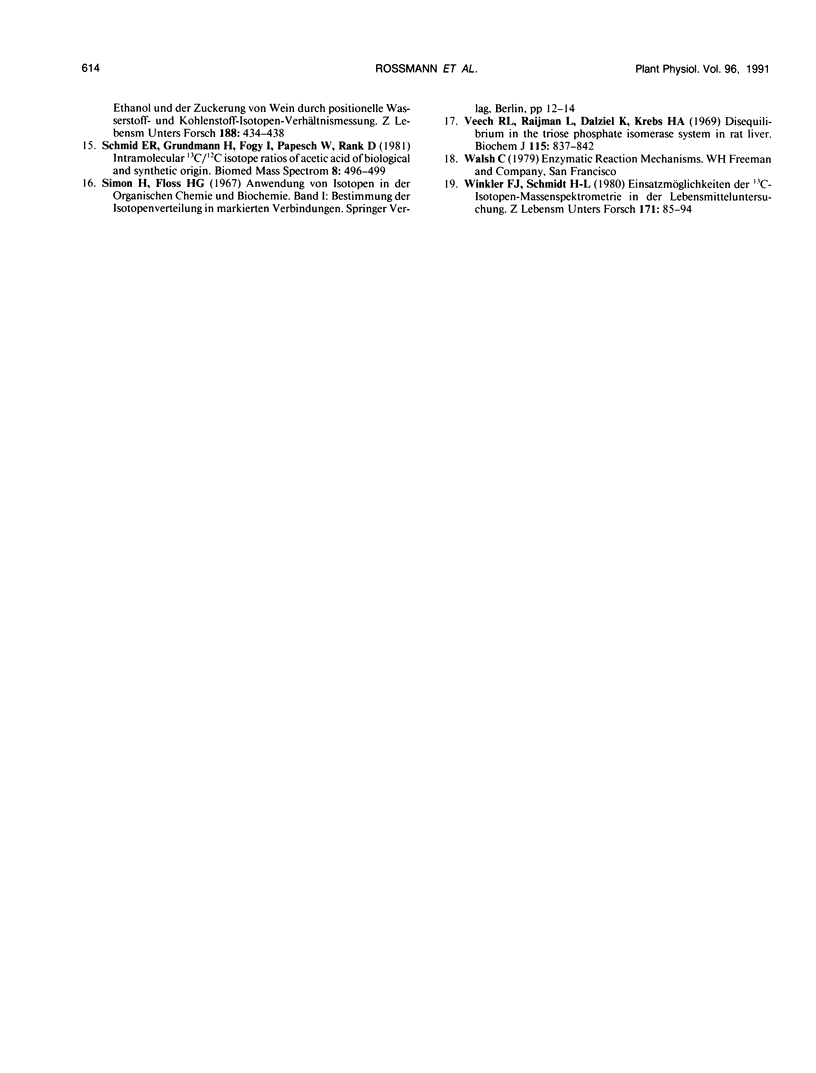
Selected References
These references are in PubMed. This may not be the complete list of references from this article.
- Anderson L. E. Chloroplast and cytoplasmic enzymes. II. Pea leaf triose phosphate isomerases. Biochim Biophys Acta. 1971 Apr 14;235(1):237–244. doi: 10.1016/0005-2744(71)90051-9. [DOI] [PubMed] [Google Scholar]
- Blair N. E., Martens C. S., Des Marais D. J. Natural abundances of carbon isotopes in acetate from a coastal marine sediment. Science. 1987 Apr 3;236:66–68. doi: 10.1126/science.11539717. [DOI] [PubMed] [Google Scholar]
- DeNiro M. J., Epstein S. Mechanism of carbon isotope fractionation associated with lipid synthesis. Science. 1977 Jul 15;197(4300):261–263. doi: 10.1126/science.327543. [DOI] [PubMed] [Google Scholar]
- Gibbs M., Kandler O. ASYMMETRIC DISTRIBUTION OF C IN SUGARS FORMED DURING PHOTOSYNTHESIS. Proc Natl Acad Sci U S A. 1957 Jun 15;43(6):446–451. doi: 10.1073/pnas.43.6.446. [DOI] [PMC free article] [PubMed] [Google Scholar]
- Lynn A. R., Sokatch J. R. Incorporation of isotope from specifically labeled glucose into alginates of Pseudomonas aeruginosa and Azotobacter vinelandii. J Bacteriol. 1984 Jun;158(3):1161–1162. doi: 10.1128/jb.158.3.1161-1162.1984. [DOI] [PMC free article] [PubMed] [Google Scholar]
- Meinschein W. G., Rinaldi G. G., Hayes J. M., Schoeller D. A. Intramolecular isotopic order in biologically produced acetic acid. Biomed Mass Spectrom. 1974 Jun;1(3):172–174. doi: 10.1002/bms.1200010306. [DOI] [PubMed] [Google Scholar]
- Melzer E., O'leary M. H. Anapleurotic CO(2) Fixation by Phosphoenolpyruvate Carboxylase in C(3) Plants. Plant Physiol. 1987 May;84(1):58–60. doi: 10.1104/pp.84.1.58. [DOI] [PMC free article] [PubMed] [Google Scholar]
- Melzer E., Schmidt H. L. Carbon isotope effects on the decarboxylation of carboxylic acids. Comparison of the lactate oxidase reaction and the degradation of pyruvate by H2O2. Biochem J. 1988 Jun 15;252(3):913–915. doi: 10.1042/bj2520913. [DOI] [PMC free article] [PubMed] [Google Scholar]
- Melzer E., Schmidt H. L. Carbon isotope effects on the pyruvate dehydrogenase reaction and their importance for relative carbon-13 depletion in lipids. J Biol Chem. 1987 Jun 15;262(17):8159–8164. [PubMed] [Google Scholar]
- Veech R. L., Raijman L., Dalziel K., Krebs H. A. Disequilibrium in the triose phosphate isomerase system in rat liver. Biochem J. 1969 Dec;115(4):837–842. doi: 10.1042/bj1150837. [DOI] [PMC free article] [PubMed] [Google Scholar]


